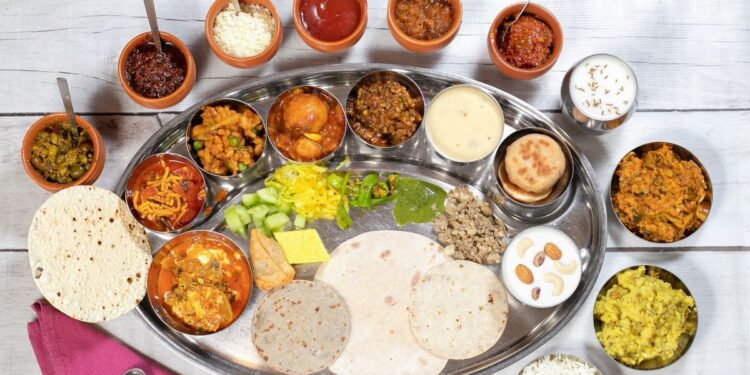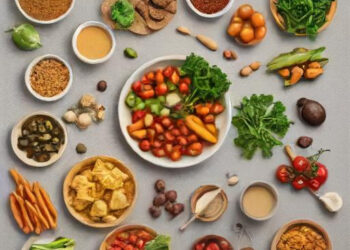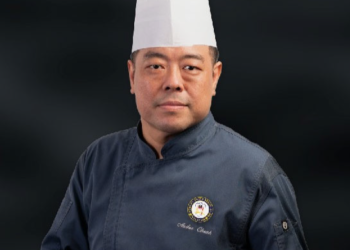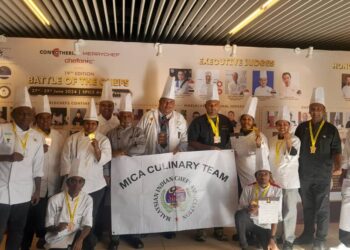THIS ARTICLE IS POWERED BY

-Khwaish Jain (cbedit@imaws.org)
The catering industry in India, like many other industries, is facing challenges after the COVID-19 pandemic. While business is picking up again, caterers have to deal with new problems. Unpredictable food prices make it hard to plan budgets and costs. Another big issue is a lack of workers, as many left the industry during the pandemic. On top of that, outdoor caterers face more competition from upgraded banquet halls. But there’s also good news! People are more health-conscious now, creating a demand for healthy food options. Catering businesses are finding ways to adapt, like using frozen and ready-made meals to save time and reduce waste.
While speaking to Mr. Bhavani Singh Purohit, President of all Gujarat Catering Association and MD of Bhavani Caterers, we will explore the biggest challenges that the caterers face, exciting new opportunities, and how the government and catering associations can work together to help the industry thrive.
 The catering industry faces various challenges, such as rising food costs and skilled labor shortages. Could you elaborate on the most pressing challenges faced by Gujarat’s catering businesses, and what steps is the Catering Association taking to address them?
The catering industry faces various challenges, such as rising food costs and skilled labor shortages. Could you elaborate on the most pressing challenges faced by Gujarat’s catering businesses, and what steps is the Catering Association taking to address them?
The COVID-19 pandemic has left a lasting impact on many industries, and the catering industry is no exception. While restrictions have eased and events are resuming, caterers now face a new set of challenges that threaten their ability to operate effectively.
One of the most pressing concerns is the unpredictable rise in food prices. Government policies and fluctuating market forces have made it difficult for caterers. Unlike pre-pandemic times, there’s no longer a fixed cost for essential ingredients. Vegetables, fruits, and even cooking oils can see dramatic price swings, making it difficult to plan menus and establish service costs. For example, the price of palm oil can skyrocket to INR 600-700 per can during peak wedding seasons due to high demand, only to come down during off-seasons. This uncertainty creates a significant challenge for caterers, who struggle to estimate costs and price their services accurately.
Compounding this issue is a significant labor shortage. The pandemic forced many catering staff to return to their hometowns or pursue alternative careers. As a result, the industry has seen a 30-40% decrease in available workers, further straining its capacity to meet customer demands.
Adding to the competitive landscape, outdoor caterers are facing increased competition from upgraded banquet halls. These venues are diversifying their services and often have their in-house catering teams, limiting the opportunities for outdoor caterers to secure bookings.

Upskilling existing staff and attracting a younger generation to the catering industry through training programs can help address the labor shortage. Caterers can also consider specializing in specific cuisines, dietary needs, or event types to differentiate themselves from the competition. Additionally, exploring collaborative arrangements with banquet halls could be mutually beneficial. By acknowledging these challenges and proactively seeking solutions, the catering industry can ensure its continued growth and success.
With changing consumer preferences and technological advancements, what exciting opportunities do you see for the catering industry shortly? What trends are shaping the future of catering in Gujarat?
The COVID-19 pandemic has seen a noticeable shift towards health-conscious eating habits among our clientele. To cater to this growing demand, we’ve broadened our menu to include a wider range of healthy and delicious options. Frozen and ready-to-eat food technology has proven to be a valuable tool in this process.
The pre-prepared meals offer several advantages. They significantly reduce the time and effort required in the kitchen, freeing us, to focus on other crucial aspects like customization and presentation. Additionally, frozen food can be a cost-effective solution, especially when faced with fluctuating prices of fresh ingredients. Most importantly, this technology helps us minimize food waste and much less need of extra labor.
However, we recognize that convenience and cost savings come with a potential drawback: compromised taste. Frozen meals can sometimes lack the freshness and depth of flavor associated with food prepared from scratch. We take this concern seriously and strive to find a balance between utilizing this technology and maintaining the high-quality, delicious food our customers expect. Overall, by embracing frozen and ready-to-eat technology, we can offer healthy options, streamline operations, minimize waste, and ultimately, ensure a successful event for our customers
The Catering Association of Gujarat plays a vital role in supporting its members. Could you share some of the key initiatives your association is undertaking to empower and support catering businesses in the state?
Unpredictable weather patterns and extreme summer heat have led to a surge in demand for banquet facilities. This presents a unique opportunity for caterers to expand their businesses beyond outdoor services. They can establish a shared restaurant or banquet hall by forming a collaborative group. This would be a manageable financial burden for individual caterers, offering several advantages. Firstly, it provides a year-round source of income, even during off-seasons for outdoor catering. Secondly, it allows each caterer to showcase their culinary skills and attract new customers, increasing their overall revenue. Finally, the shared space helps build a stronger brand presence for all participating caterers, attracting new clients and solidifying their reputation in the market. This collaborative approach fosters teamwork and allows them to create a more robust and successful business model that caters to a wider range of customer needs.
A skilled workforce is crucial for the catering industry’s success. Does the association collaborate with educational institutions or organize training programs to help caterers develop the necessary skills and knowledge to thrive in the evolving market?
The catering industry faces a challenge in attracting new talent. Unlike previous generations, many individuals are pursuing higher education and other career paths. This has led to a shortage of personnel, impacting both laborers and chefs. To address this issue, I believe the government can play a significant role by organizing training camps and programs specifically designed for those interested in entering the catering field. These programs would equip individuals with the necessary skills and knowledge to thrive in this exciting industry. By investing in workforce development, the government can not only help solve the personnel shortage for caterers like ourselves but also create new career opportunities for those seeking a fulfilling and rewarding path.
You mentioned some challenges faced by caterers. What kind of support would you like to see from the government to help the catering industry overcome these difficulties?
When formulating policies for the food and catering industry, the government should actively collaborate with catering associations. This open communication would ensure a clear understanding of the current challenges faced by caterers, such as fluctuating food prices or labor shortages. By working together, the government can craft policies that not only benefit the industry as a whole but also create a win-win situation for both caterers and consumers.
The catering industry, while recovering from the pandemic, faces hurdles like unpredictable food costs and worker shortages. The association is looking for government support and collaboration on policymaking to address these challenges is crucial. Additionally, training programs to cultivate a skilled workforce and exploring opportunities like shared banquet halls can ensure the industry’s long-term success and growth. By embracing innovation and working together, caterers can continue to adapt and thrive in the evolving food landscape.







